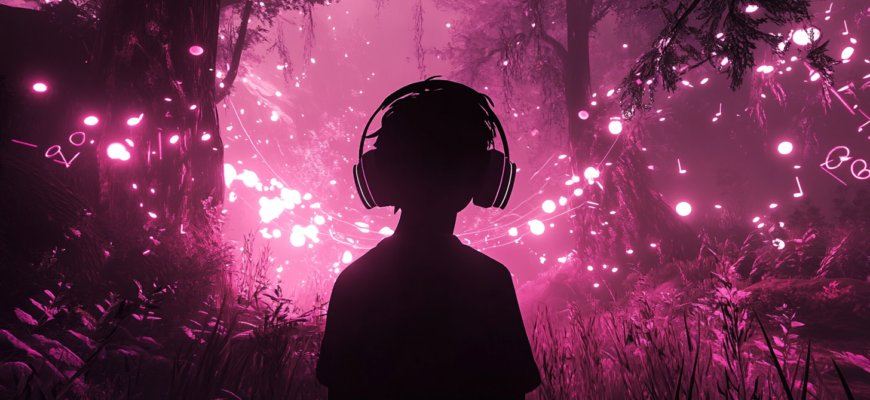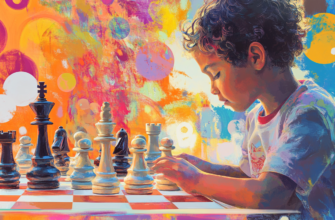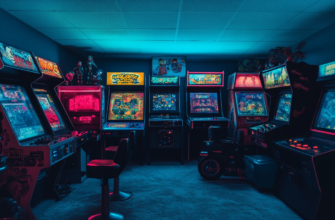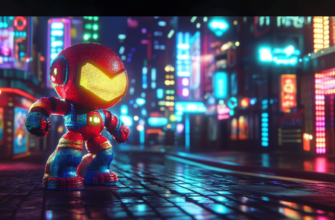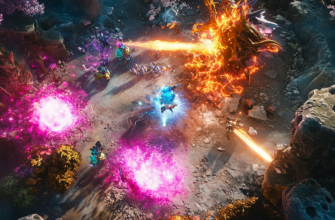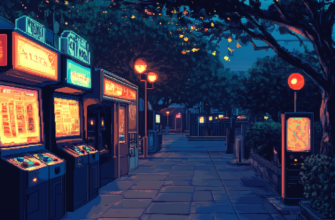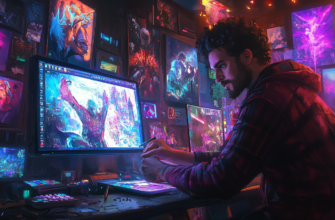- How game music and soundtracks shape immersive atmospheres
- Why is music so important in games?
- Step 1: Setting the scene with tone and mood
- Step 2: Synchronizing with gameplay
- Dynamic soundtracks
- Step 3: Building emotional connection
- Step 4: Adding cultural identity
- Step 5: Communicating through silence
- A moment of brilliance: Limbo
- Practical tips for maximizing the impact of game music in your experience
- Conclusion: How music elevates gaming to new heights
How game music and soundtracks shape immersive atmospheres
As gamers, we’ve all had those epic moments when a boss fight seems to sync perfectly with the soundtrack, or a tranquil piece of music helps us feel the full depth of a world we’re exploring. Music and soundtracks play a critical role in games, much like cinematography in films – they set the tone, underline the emotions, and create immersion. In this article, I’m going to dive into how music and soundtracks shape the atmosphere of games and enhance our experience, and I’ll give my personal take on how these elements make gaming even more memorable.
Why is music so important in games?
Before we jump into how music creates immersion, let’s take a moment: how often do you notice the music when you’re gaming? Is it always in the foreground? Probably not. And that’s what makes video game music genius.
Great game music slips in under our consciousness, guiding us emotionally as we swing between action-packed combat, eerie horror settings, or heart-wrenching story arcs. It enhances our experience without necessarily standing front and center. It works hand in hand with visuals, gameplay, and storytelling to immerse us deep into the game world.
But not all game soundtracks are the same. From the orchestral masterpieces of The Elder Scrolls V: Skyrim to the atmospheric tunes of indie games like Hollow Knight or the synth-laden tracks in Cyberpunk 2077, game music comes in various forms, each tailored to fit the unique vibe of the game. Now, let’s break it down step by step and examine how music creates atmosphere in games.
Step 1: Setting the scene with tone and mood
The first job of game music is to set the tone. If you’re exploring an alien world like No Man’s Sky, you want something that helps you feel the vastness of space. Developers usually achieve this by using slow, ambient soundscapes that breathe life into these otherworldly environments. In contrast, a fast-paced action-adventure game like DOOM needs to ramp the adrenaline up with heavy, high-energy tracks, helping you go into full-on combat mode.
Here’s how music sets the tone:
- Dark, eerie melodies: Games like Dead Space or Amnesia: The Dark Descent rely heavily on slow, dissonant scores to create fear and suspense. This type of music builds up anxiety, often using drawn-out notes or silence, making the player feel uneasy, perfect for horror and survival games.
- Full-blown orchestral pieces: When you want to feel like a hero, nothing does it better than orchestral music. Think of The Legend of Zelda: Breath of the Wild where you explore vast fields with subtle, uplifting scores in the background, making the world feel majestic and ripe for adventure.
- Retro nostalgia: Indie games like Shovel Knight and Undertale use chiptunes and pixel sounds to evoke that 8-bit nostalgic feel, fueling the aesthetic and simplicity of the game’s retro themes.
Step 2: Synchronizing with gameplay
Beyond setting the mood, music in games also reacts to the player’s actions and syncs with what’s happening on screen. You know that feeling when the music pushes you as you take down a horde of enemies, and it gets stronger the more intense things become? That’s dynamic sound design, and it’s so powerful.
Here are some cool techniques developers use:
Dynamic soundtracks
A dynamic soundtrack changes in real-time based on the player’s situation within the game. For example, if you’re just creeping through the woods in Red Dead Redemption 2, the music might be soft and ambient. But when you get caught in a fire-fight, the same ambient music seamlessly transitions into more intense combat music.
Another remarkable example is Celeste, a game where the emotional music becomes faster-paced or distorted as the stages get tougher, enhancing the sense of challenge and determination.
Step 3: Building emotional connection
No matter the genre, the best games create emotional connections – whether it’s pride from a hard-fought victory or heartbreak from a tear-jerking cutscene. Music is often the key ingredient pulling at your heartstrings.
Role-playing games (RPGs) are especially great at this. For instance, let’s talk about Final Fantasy VII. The Aeris Theme is forever etched in the minds of gamers because of the powerful scene that accompanies it. No spoilers here, but anyone who’s played it knows the emotional weight this music carries.
When we look at modern RPGs like The Witcher 3, not only does the music fit the color palette of the vast Northern Kingdoms, but it also uses regional instruments to build authenticity, making you feel a stronger bond with the world and its consequences.
Step 4: Adding cultural identity
Some games are steeped in cultural influences, and the soundtrack plays a vital role in more than just shaking up your emotions; it reflects the culture of the game’s locale. Whether it’s the tribal rhythms and chants in Horizon Zero Dawn or the Gaelic influences in Assassin’s Creed Valhalla, music can add layers of cultural identity to a game, making it feel authentic and rooted in a certain time or place.
Another brilliant example of cultural identity in game music is Ghost of Tsushima, where traditional Japanese instruments like the shakuhachi and shamisen are combined with a cinematic score to ground players in 13th-century Japan during the Mongol invasions.
Step 5: Communicating through silence
Now here’s something cool – sometimes, the absence of music says more than the music itself. Nothing gets the tension rolling like moments of silence. Games like Silent Hill expertly use silence, making you anxious, where every little ambient noise (like a footstep) has you on edge. Without any musical cues, you’re left relying on your instincts, which heightens the fear and suspense even more.
A moment of brilliance: Limbo
If you’ve ever played Limbo, you’d know how effectively it used silence paired with barely-there ambient noise to make you feel utterly lonely and lost in a black-and-white dreamscape. Sometimes, less really is more.
Practical tips for maximizing the impact of game music in your experience
I’m not just going to tell you how great game soundtracks are – I’ve got some practical advice on how you can truly appreciate game music, and make it work for you:
- Use a good headset: If you’re not already doing this, game music is so much better with a good gaming headset. You’ll hear every instrument and ambient sound in crisp detail. Trust me, it makes a world of difference.
- Customize the audio mix: Most games have sliders that allow you to adjust the music, sound effects, and dialogue volumes separately. If you feel like your music is being drowned out by the game’s action sounds, give the music a little more prominence.
- Pay attention to key moments: In the heat of battle, it’s easy to “lose” the music. But try to tune in at critical moments, be it boss fights, emotional cutscenes, or moments of high tension. Understanding which track plays when can enhance your appreciation of the game.
- Explore the game’s soundtrack outside of the game: If a particular game blew your mind musically (like Hades or Nier: Automata), hunt down the official soundtrack. Many are available for download or streaming. They make great background tunes for studying, working, or relaxing.
Conclusion: How music elevates gaming to new heights
Game music and soundtracks are more than just background noise – they are a crucial part of the game’s identity and can elevate a good game to greatness. Whether it’s the dark, dissonant tones of a horror game, the pulse-pounding beats of an action adventure, or a somber piano note in the climax of an emotional story, music plays right into your heart.
So next time you’re playing, take a moment to bask in the soundtrack. Listen closely and appreciate how that melody or harmony is helping to guide you through the experience. Who knows? It might just become one of your most cherished aspects of gaming.
Now it’s your turn to share! Do you have a game soundtrack that blew your mind? Drop some recommendations in the comments below, and let’s talk game music!

